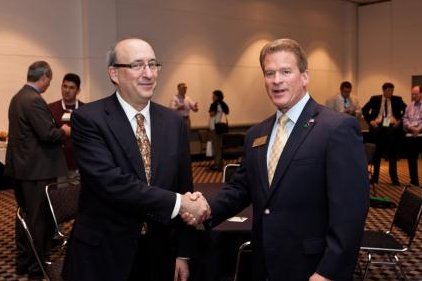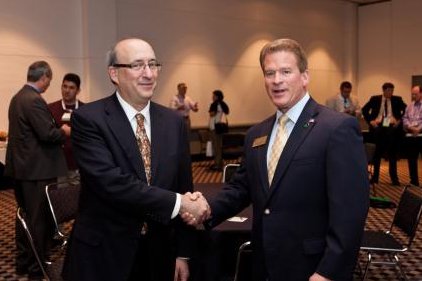
|
OSHA’s beleaguered VPP is getting strong support from the American Society of Safety Engineers (ASSE).
“All of OSHA should be in VPP,” said ASSE President Richard A. Pollock, CSP, in a letter to Rep. Timothy L. Walberg, chair of the U.S. Subcommittee on Workforce Protections’ Committee on Education and the Workforce. Walberg’s committee recently held the hearing; “Promoting Safe Workplaces Through Voluntary Protection Programs.”
VPP has come under criticism recently for allowing workplaces with higher-than-average injury and fatality rates to continue participating in the program, which allows member companies in good standing to forgo regular OSHA inspections.
Pollock said the VPP requirement that participants have in place injury and illness prevention plans (I2P2) is a key to the program’s success. He called for an OSHA standard requiring all employers to have in place an I2P2 program, saying that may be the only way that OSHA’s overall approach to workplace regulation can be in line with how the best employers achieve safety.
“A well written OSHA I2P2 standard that truly causes a shift to risk-based approaches to safety and health among all employers can change the overall focus of OSHA’s work away from ensuring employer adherence to inflexible standards that too often lead to nitpicky enforcement efforts,” Pollock said. “The current disconnect between how OSHA encourages employer commitment to safety and health and how the best employers achieve safety and health can be bridged.”
ASSE also urged the subcommittee to move forward with codification of the program so it can become a permanent part of OSHA’s effort to help ensure the safety of this nation’s workers; backed continued research into the effectiveness of all OSHA programs; and stated its general agreement with OSHA that incentives designed to discourage workers from reporting injuries cannot be part of VPP.
“Even the most minimal levels of safety are not achieved when workers fear or are discouraged from reporting injuries. Appropriate incentives need to encourage workers to engage in safe practices,” Pollock said.
Created in 1982, VPP partners with businesses and worksites that commit to effective employee protection beyond the requirements of OSHA standards. VPP participants develop and implement systems to effectively identify, evaluate, prevent, and control occupational hazards to prevent employee injuries and illnesses. As a result, the average VPP worksite has a lost workday incidence rate at least 50 percent below the average of its industry, according to OSHA.


